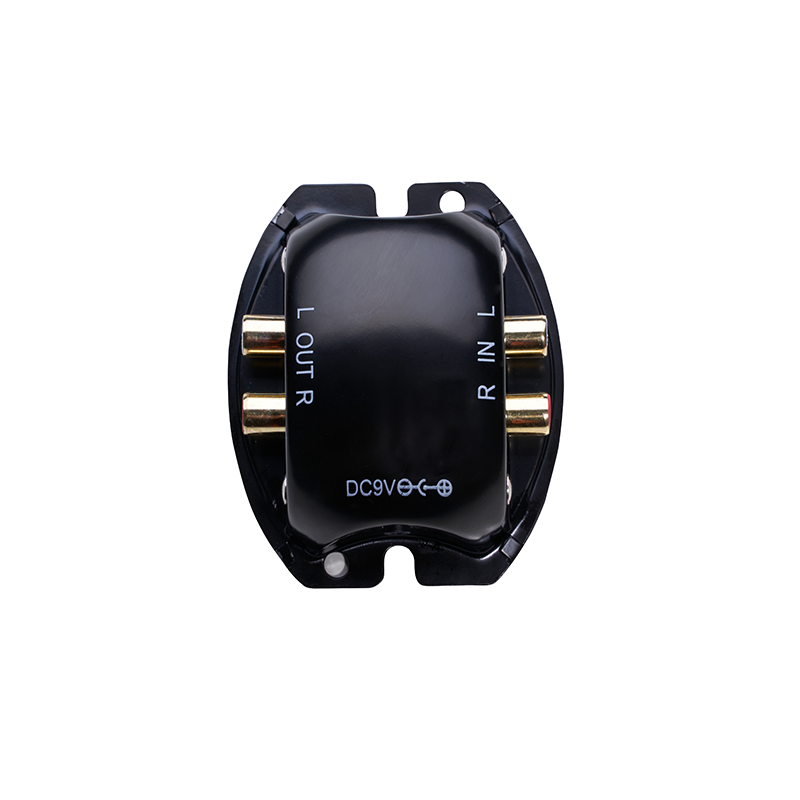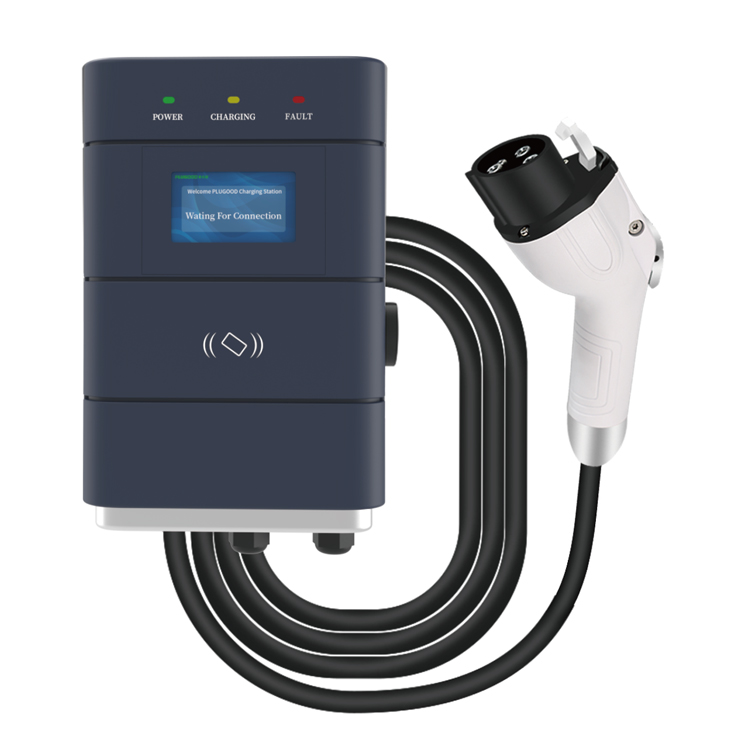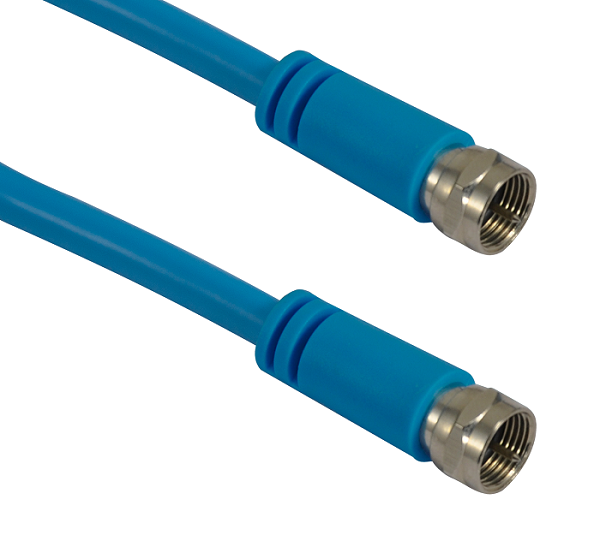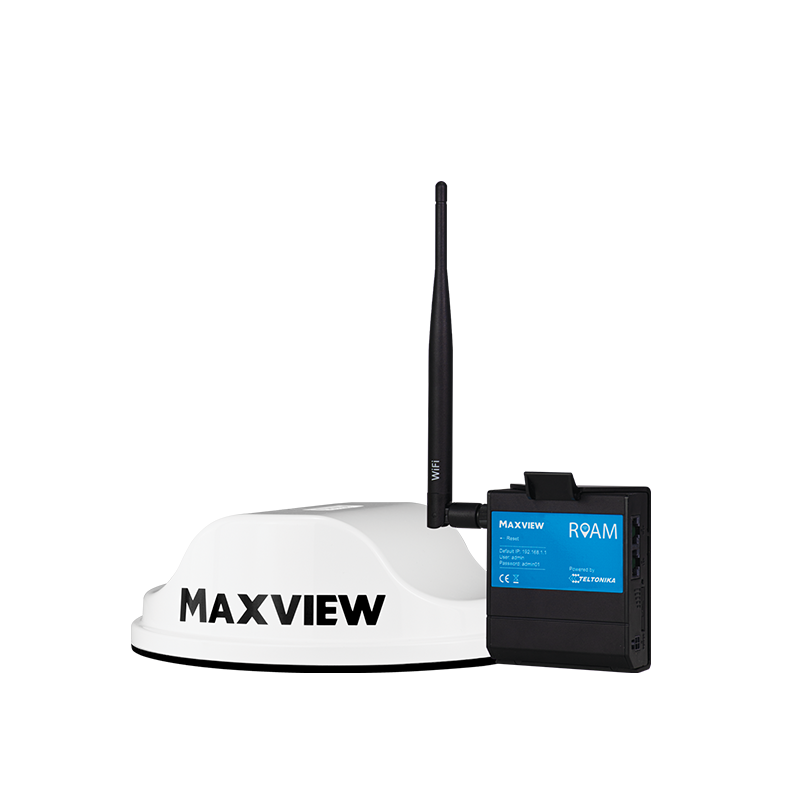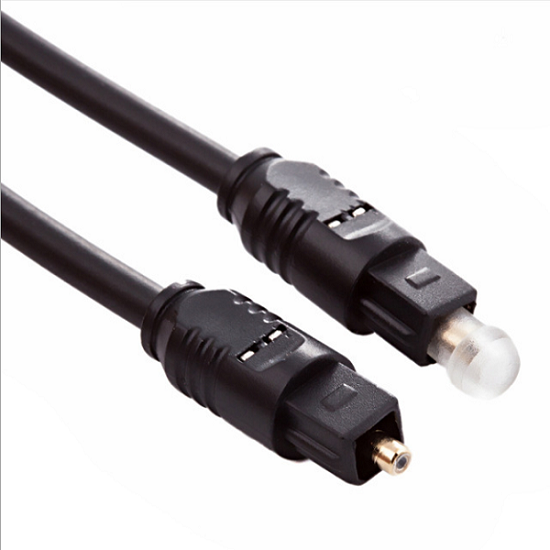8K New Technology: 8K HDMI2.1
Features and Scheme Sharing
With the adoption of 8K+5G technology for live broadcast at the two sessions and the successive introduction of 8K TVs by major domestic and foreign TV manufacturers, I believe that the word 8K is no longer unfamiliar to everyone. So what is 8K, what are the functions of 8K, and what technology is used to achieve it. Let’s talk briefly with you today.
The most popular 8K digital video interface is HDMI2.1. The following is a brief description of the format, transmission mode, DSC function and HDR function supported by HDMI2.1.
1. Support higher resolution and frame rate
§
TMDS Mode
§
6 Gbps x 3 lanes = 18 Gbps
§
Fixed Rate Link (FRL) Mode
§
12 Gbps x 4 lanes = 48 Gbps
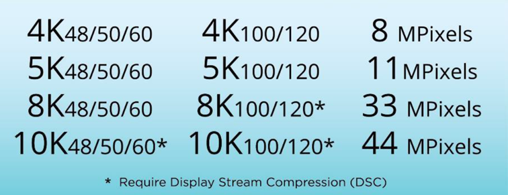
2. Support FLR transmission mode
§
HDMI2.1 defines a new transmission mode FRL (Fixed Rate link), which defines the original TMDS CLOCK CHANNEL as a Lane of FRL, that is, the clock channel is also changed to transmit data. Through FRL mode, the highest transmission bit rate is 4x12Gbps=48Gbps
§
§
FRL connection process
|
Rate per
Lane
|
Lane
number
|
Link
width
|
FRL
Rate
|
Format
|
|
3Gbps
|
3
|
9Gbps
|
1
|
4k/24
8bit444
|
|
3Gbps
|
3
|
18Gbps
|
2
|
4K/60
8bit444
|
|
6Gbps
|
4
|
24Gbps
|
3
|
5K/60
8bit444
|
|
8Gbps
|
4
|
32Gbps
|
4
|
8K/60
8bit420
|
|
10Gbps
|
4
|
40Gbps
|
5
|
10K/60
8bit420
4K/120 10bit
|
|
12Gbps
|
4
|
48Gbps
|
6
|
10K/60
8bit420
4K/120
12bit
|
3. DSC1.2
§
HDMI2.1 adopts VESA DSC VISION1.2a standard. Judging from the content of the HDMI2.1 standard, DSC seems to divide the original picture into several parts (Slice), and only compress it in the horizontal direction. The original Hactive+Hblank is compressed to Hcactive+Hcblank, as shown in the figure below, the subsequent processing It is similar to transmitting and uncompressed signals . Sink must indicate in the EDID that it supports DSC (DSC-1p2=1) and the supported format, so that Source can send compressed signals. Source transmits PPS (picture parameter set) to sink through CVTEM (compressed video transport extended metadata) packet.
§
Compressed signals can only be transmitted through FRL
4. Static HDR and dynamic HDR
§
PACKET in HDMI1.4 (HDR-Metadate is not supported)
§
Added color PACKET (0F87) in 4K HDMI2.0 to support static HDR
§
HDMI2.1 newly added PACKET ((0X7F) EMP supports dynamic HDR
§
§
Characteristics of HDMI transmission
§
The sink must indicate which kind of HDR and which kind of Metadata is supported in the HDR Metadata Block of HDR of EDID (can support static or several dynamic HDR at the same time)
§
For static Metadata, the Source end is transmitted through 0X87 infoframepacket. Both HDMI2.1 and CTA-861-G stipulate that every two fields (Field) must be transmitted once
§
For dynamic Metadata, the Source end is transmitted through 0X7F EMP (Extended Metadata packet); because it is closely related to the image content , EMP is transmitted in the blanking period of the previous frame for the next frame to use
§
The transmitted Metadata Packet contains the infoframe typecode, and the sink knows what kind of Metadata it is and corresponds to the corresponding HDR
§
5. Test plan of Kedian HDMI 2.1
VG879 host + MD module supports 8K HDMI2.1

Features of MD module:
Support FRL (Max.48Gbps) and TMDS (Max. 18Gbps); support uncompressed 8K/60p YCbCr4:2:0 and 4K/120p YCbCr4:4:4 signals; HDCP1.4/2.3; support DSC1.2 function
|
Connector
|
HDMI x 1
|
|
Data Rate
|
Max. 48Gbps (FRL), Max 18Gbps (TMDS)
|
|
Video Timing Standard
|
RGB, YCbCr 4:4:4, 4:2:2, 4:2:0
|
|
Color Depth
|
8, 10, 12, bit
|
|
HDCP
|
Ver. 2.3 / 1.4
|
|
Audio Format
|
HDMI: L-PCM, AAC, AC3
Option: VT-8500-0006 (Dolby Digital Plus, DTS HD, etc.)
COAX OUT: for ARC and eARC
|
HDR function
HDR10 and HLG test gallery
HDR10+ test
Dolby Vision
Features and Scheme Sharing
With the adoption of 8K+5G technology for live broadcast at the two sessions and the successive introduction of 8K TVs by major domestic and foreign TV manufacturers, I believe that the word 8K is no longer unfamiliar to everyone. So what is 8K, what are the functions of 8K, and what technology is used to achieve it. Let’s talk briefly with you today.
The most popular 8K digital video interface is HDMI2.1. The following is a brief description of the format, transmission mode, DSC function and HDR function supported by HDMI2.1.
1. Support higher resolution and frame rate
§
TMDS Mode
§
6 Gbps x 3 lanes = 18 Gbps
§
Fixed Rate Link (FRL) Mode
§
12 Gbps x 4 lanes = 48 Gbps
2. Support FLR transmission mode
§
8K HDMI2.1 defines a new transmission mode FRL (Fixed Rate link), which defines the original TMDS CLOCK CHANNEL as a Lane of FRL, that is, the clock channel is also changed to transmit data. Through FRL mode, the highest transmission bit rate is 4x12Gbps=48Gbps
§
§
FRL connection process

|
Rate per
Lane
|
Lane
number
|
Link
width
|
FRL
Rate
|
Format
|
|
3Gbps
|
3
|
9Gbps
|
1
|
4k/24
8bit444
|
|
3Gbps
|
3
|
18Gbps
|
2
|
4K/60
8bit444
|
|
6Gbps
|
4
|
24Gbps
|
3
|
5K/60
8bit444
|
|
8Gbps
|
4
|
32Gbps
|
4
|
8K/60
8bit420
|
|
10Gbps
|
4
|
40Gbps
|
5
|
10K/60
8bit420
4K/120 10bit
|
|
12Gbps
|
4
|
48Gbps
|
6
|
10K/60
8bit420
4K/120
12bit
|
3. DSC1.2
§
8K HDMI2.1 adopts VESA DSC VISION1.2a standard. Judging from the content of the HDMI2.1 standard, DSC seems to divide the original picture into several parts (Slice), and only compress it in the horizontal direction. The original Hactive+Hblank is compressed to Hcactive+Hcblank, as shown in the figure below, the subsequent processing It is similar to transmitting and uncompressed signals . Sink must indicate in the EDID that it supports DSC (DSC-1p2=1) and the supported format, so that Source can send compressed signals. Source transmits PPS (picture parameter set) to sink through CVTEM (compressed video transport extended metadata) packet.
§
Compressed signals can only be transmitted through FRL
4. Static HDR and dynamic HDR
§
PACKET in HDMI1.4 (HDR-Metadate is not supported)
§
Added color PACKET (0F87) in HDMI2.0 to support static HDR
§
HDMI2.1 newly added PACKET ((0X7F) EMP supports dynamic HDR
§
§
Characteristics of HDMI transmission
§
The sink must indicate which kind of HDR and which kind of Metadata is supported in the HDR Metadata Block of HDR of EDID (can support static or several dynamic HDR at the same time)
§
For static Metadata, the Source end is transmitted through 0X87 infoframepacket. Both HDMI2.1 and CTA-861-G stipulate that every two fields (Field) must be transmitted once
§
For dynamic Metadata, the Source end is transmitted through 0X7F EMP (Extended Metadata packet); because it is closely related to the image content , EMP is transmitted in the blanking period of the previous frame for the next frame to use
§
The transmitted Metadata Packet contains the infoframe typecode, and the sink knows what kind of Metadata it is and corresponds to the corresponding HDR
§
VG879 host + MD module supports HDMI2.1

Features of MD module:
Support FRL (Max.48Gbps) and TMDS (Max. 18Gbps); support uncompressed 8K/60p YCbCr4:2:0 and 4K/120p YCbCr4:4:4 signals; HDCP1.4/2.3; support DSC1.2 function
|
Connector
|
HDMI x 1
|
|
Data Rate
|
Max. 48Gbps (FRL), Max 18Gbps (TMDS)
|
|
Video Timing Standard
|
RGB, YCbCr 4:4:4, 4:2:2, 4:2:0
|
|
Color Depth
|
8, 10, 12, bit
|
|
HDCP
|
Ver. 2.3 / 1.4
|
|
Audio Format
|
HDMI: L-PCM, AAC, AC3
Option: VT-8500-0006 (Dolby Digital Plus, DTS HD, etc.)
COAX OUT: for ARC and eARC
|
HDR function
HDR10 and HLG test gallery
HDR10+ test
Dolby Vision
Features and Scheme Sharing
With the adoption of 8K+5G technology for live broadcast at the two sessions and the successive introduction of 8K TVs by major domestic and foreign TV manufacturers, I believe that the word 8K is no longer unfamiliar to everyone. So what is 8K, what are the functions of 8K, and what technology is used to achieve it. Let’s talk briefly with you today.
The most popular 8K digital video interface is HDMI2.1. The following is a brief description of the format, transmission mode, DSC function and HDR function supported by HDMI2.1.
1. Support higher resolution and frame rate
§
TMDS Mode
§
6 Gbps x 3 lanes = 18 Gbps
§
Fixed Rate Link (FRL) Mode
§
12 Gbps x 4 lanes = 48 Gbps
2. Support FLR transmission mode
§
8K HDMI2.1 defines a new transmission mode FRL (Fixed Rate link), which defines the original TMDS CLOCK CHANNEL as a Lane of FRL, that is, the clock channel is also changed to transmit data. Through FRL mode, the highest transmission bit rate is 4x12Gbps=48Gbps
§
§
FRL connection process

|
Rate per
Lane
|
Lane
number
|
Link
width
|
FRL
Rate
|
Format
|
|
3Gbps
|
3
|
9Gbps
|
1
|
4k/24
8bit444
|
|
3Gbps
|
3
|
18Gbps
|
2
|
4K/60
8bit444
|
|
6Gbps
|
4
|
24Gbps
|
3
|
5K/60
8bit444
|
|
8Gbps
|
4
|
32Gbps
|
4
|
8K/60
8bit420
|
|
10Gbps
|
4
|
40Gbps
|
5
|
10K/60
8bit420
4K/120 10bit
|
|
12Gbps
|
4
|
48Gbps
|
6
|
10K/60
8bit420
4K/120
12bit
|
3. DSC1.2
§
8K HDMI2.1 adopts VESA DSC VISION1.2a standard. Judging from the content of the HDMI2.1 standard, DSC seems to divide the original picture into several parts (Slice), and only compress it in the horizontal direction. The original Hactive+Hblank is compressed to Hcactive+Hcblank, as shown in the figure below, the subsequent processing It is similar to transmitting and uncompressed signals . Sink must indicate in the EDID that it supports DSC (DSC-1p2=1) and the supported format, so that Source can send compressed signals. Source transmits PPS (picture parameter set) to sink through CVTEM (compressed video transport extended metadata) packet.
§
Compressed signals can only be transmitted through FRL
4. Static HDR and dynamic HDR
§
PACKET in HDMI1.4 (HDR-Metadate is not supported)
§
Added color PACKET (0F87) in HDMI2.0 to support static HDR
§
HDMI2.1 newly added PACKET ((0X7F) EMP supports dynamic HDR
§
§
Characteristics of HDMI transmission
§
The sink must indicate which kind of HDR and which kind of Metadata is supported in the HDR Metadata Block of HDR of EDID (can support static or several dynamic HDR at the same time)
§
For static Metadata, the Source end is transmitted through 0X87 infoframepacket. Both HDMI2.1 and CTA-861-G stipulate that every two fields (Field) must be transmitted once
§
For dynamic Metadata, the Source end is transmitted through 0X7F EMP (Extended Metadata packet); because it is closely related to the image content , EMP is transmitted in the blanking period of the previous frame for the next frame to use
§
The transmitted Metadata Packet contains the infoframe typecode, and the sink knows what kind of Metadata it is and corresponds to the corresponding HDR
§
VG879 host + MD module supports HDMI2.1

Features of MD module:
Support FRL (Max.48Gbps) and TMDS (Max. 18Gbps); support uncompressed 8K/60p YCbCr4:2:0 and 4K/120p YCbCr4:4:4 signals; HDCP1.4/2.3; support DSC1.2 function
|
Connector
|
HDMI x 1
|
|
Data Rate
|
Max. 48Gbps (FRL), Max 18Gbps (TMDS)
|
|
Video Timing Standard
|
RGB, YCbCr 4:4:4, 4:2:2, 4:2:0
|
|
Color Depth
|
8, 10, 12, bit
|
|
HDCP
|
Ver. 2.3 / 1.4
|
|
Audio Format
|
HDMI: L-PCM, AAC, AC3
Option: VT-8500-0006 (Dolby Digital Plus, DTS HD, etc.)
COAX OUT: for ARC and eARC
|
HDR function
HDR10 and HLG test gallery
HDR10+ test
Dolby Vision
8K New Technology: 8K HDMI2.1 Features and Scheme Sharing
With the adoption of 8K+5G technology for live broadcast at the two sessions and the successive introduction of 8K TVs by major domestic and foreign TV manufacturers, I believe that the word 8K is no longer unfamiliar to everyone. So what is 8K, what are the functions of 8K, and what technology is used to achieve it. Let’s talk briefly with you today.
The most popular 8K digital video interface is 8K HDMI2.1. The following is a brief description of the format, transmission mode, DSC function and HDR function supported by 8K HDMI2.1.
1. Support higher resolution and frame rate
§
TMDS Mode
§
6 Gbps x 3 lanes = 18 Gbps
§
Fixed Rate Link (FRL) Mode
§
12 Gbps x 4 lanes = 48 Gbps
2. Support FLR transmission mode
§
8K HDMI2.1 defines a new transmission mode FRL (Fixed Rate link), which defines the original TMDS CLOCK CHANNEL as a Lane of FRL, that is, the clock channel is also changed to transmit data. Through FRL mode, the highest transmission bit rate is 4x12Gbps=48Gbps
§
§
FRL connection process
|
Rate per
Lane
|
Lane
number
|
Link
width
|
FRL
Rate
|
Format
|
|
3Gbps
|
3
|
9Gbps
|
1
|
4k/24
8bit444
|
|
3Gbps
|
3
|
18Gbps
|
2
|
4K/60
8bit444
|
|
6Gbps
|
4
|
24Gbps
|
3
|
5K/60
8bit444
|
|
8Gbps
|
4
|
32Gbps
|
4
|
8K/60
8bit420
|
|
10Gbps
|
4
|
40Gbps
|
5
|
10K/60
8bit420
4K/120 10bit
|
|
12Gbps
|
4
|
48Gbps
|
6
|
10K/60
8bit420
4K/120
12bit
|
3. DSC1.2
§
8K HDMI2.1 adopts VESA DSC VISION1.2a standard. Judging from the content of the 8K HDMI2.1 standard, DSC seems to divide the original picture into several parts (Slice), and only compress it in the horizontal direction. The original Hactive+Hblank is compressed to Hcactive+Hcblank, as shown in the figure below, the subsequent processing It is similar to transmitting and uncompressed signals . Sink must indicate in the EDID that it supports DSC (DSC-1p2=1) and the supported format, so that Source can send compressed signals. Source transmits PPS (picture parameter set) to sink through CVTEM (compressed video transport extended metadata) packet.
§
Compressed signals can only be transmitted through FRL
4. Static HDR and dynamic HDR
§
PACKET in 1K HDMI1.4 (HDR-Metadate is not supported)
§
Added color PACKET (0F87) in 4K HDMI2.0 to support static HDR
§
8K HDMI2.1 newly added PACKET ((0X7F) EMP supports dynamic HDR
§
§
Characteristics of HDMI transmission
§
The sink must indicate which kind of HDR and which kind of Metadata is supported in the HDR Metadata Block of HDR of EDID (can support static or several dynamic HDR at the same time)
§
For static Metadata, the Source end is transmitted through 0X87 infoframepacket. Both 8K HDMI2.1 and CTA-861-G stipulate that every two fields (Field) must be transmitted once
§
For dynamic Metadata, the Source end is transmitted through 0X7F EMP (Extended Metadata packet); because it is closely related to the image content , EMP is transmitted in the blanking period of the previous frame for the next frame to use
§
The transmitted Metadata Packet contains the infoframe typecode, and the sink knows what kind of Metadata it is and corresponds to the corresponding HDR
§
5. Test plan of 8K HDMI 2.1
VG879 host + MD module supports 8K HDMI2.1

Features of MD module:
Support FRL (Max.48Gbps) and TMDS (Max. 18Gbps); support uncompressed 8K/60p YCbCr4:2:0 and 4K/120p YCbCr4:4:4 signals; HDCP1.4/2.3; support DSC1.2 function
|
Connector
|
HDMI x 1
|
|
Data Rate
|
Max. 48Gbps (FRL), Max 18Gbps (TMDS)
|
|
Video Timing Standard
|
RGB, YCbCr 4:4:4, 4:2:2, 4:2:0
|
|
Color Depth
|
8, 10, 12, bit
|
|
HDCP
|
Ver. 2.3 / 1.4
|
|
Audio Format
|
HDMI: L-PCM, AAC, AC3
Option: VT-8500-0006 (Dolby Digital Plus, DTS HD, etc.)
COAX OUT: for ARC and eARC
|
HDR function
HDR10 and HLG test gallery
HDR10+ test
Dolby Vision
 English
English  Esperanto
Esperanto  Afrikaans
Afrikaans  Català
Català  שפה עברית
שפה עברית  Cymraeg
Cymraeg  Galego
Galego  Latviešu
Latviešu  icelandic
icelandic  ייִדיש
ייִדיש  беларускі
беларускі  Hrvatski
Hrvatski  Kreyòl ayisyen
Kreyòl ayisyen  Shqiptar
Shqiptar  Malti
Malti  lugha ya Kiswahili
lugha ya Kiswahili  አማርኛ
አማርኛ  አማርኛ
አማርኛ  Bosanski
Bosanski  Frysk
Frysk  ភាសាខ្មែរ
ភាសាខ្មែរ  ქართული
ქართული  ગુજરાતી
ગુજરાતી  Hausa
Hausa  Кыргыз тили
Кыргыз тили  ಕನ್ನಡ
ಕನ್ನಡ  Corsa
Corsa  Kurdî
Kurdî  മലയാളം
മലയാളം  Maori
Maori  Монгол хэл
Монгол хэл  Hmong
Hmong  IsiXhosa
IsiXhosa  Zulu
Zulu  Lëtzebuergesch
Lëtzebuergesch  Malagasy
Malagasy  Punjabi
Punjabi  پښتو
پښتو  Chichewa
Chichewa  Samoa
Samoa  Sesotho
Sesotho  සිංහල
සිංහල  Gàidhlig
Gàidhlig  Cebuano
Cebuano  Somali
Somali  Тоҷикӣ
Тоҷикӣ  O'zbek
O'zbek  Hawaiian
Hawaiian  سنڌي
سنڌي  Shinra
Shinra  Shinra
Shinra  Հայերեն
Հայերեն  Igbo
Igbo  Sundanese
Sundanese  Yoruba
Yoruba  Español
Español  Português
Português  русский
русский  Français
Français  日本語
日本語  Deutsch
Deutsch  tiếng Việt
tiếng Việt  Italiano
Italiano  Nederlands
Nederlands  ภาษาไทย
ภาษาไทย  Polski
Polski  한국어
한국어  Svenska
Svenska  magyar
magyar  Malay
Malay  বাংলা ভাষার
বাংলা ভাষার  Dansk
Dansk  Suomi
Suomi  हिन्दी
हिन्दी  Pilipino
Pilipino  Türkçe
Türkçe  Gaeilge
Gaeilge  العربية
العربية  Indonesia
Indonesia  Norsk
Norsk  تمل
تمل  český
český  ελληνικά
ελληνικά  ελληνικά
ελληνικά  український
український  Javanese
Javanese  فارسی
فارسی  தமிழ்
தமிழ்  తెలుగు
తెలుగు  नेपाली
नेपाली  Burmese
Burmese  български
български  ລາວ
ລາວ  Latine
Latine  Қазақша
Қазақша  Euskal
Euskal  Az?rbaycan
Az?rbaycan  Slovensky jazyk
Slovensky jazyk  Македонски
Македонски  Lietuvos
Lietuvos  Eesti Keel
Eesti Keel  Română
Română  Slovenski
Slovenski  मराठी
मराठी  Srpski језик
Srpski језик 






